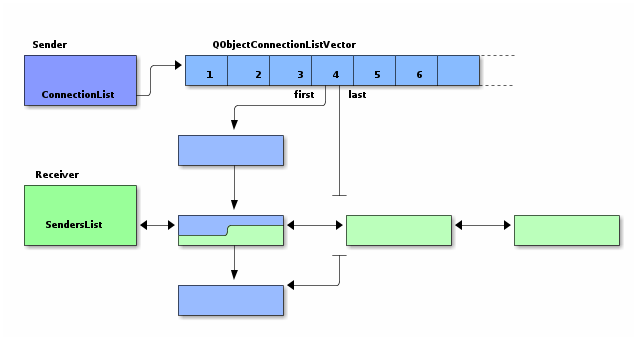Qt Signal Slot Two Classes
Quite a frequent problem when working with signals with slots in Qt5, according to my observations on the forum, is the connection of slots in the syntax on the pointers to signals having an overload of the signature. The same applies to slots that have an overload.
Let's take a test class that has overloaded signals.
Here there is a signal, with an overload of the signature. Connect this signal will also be to the slots that are declared in the Widget class, and which also have an overload of the signature.
Qt Jambis's signals and slots mechanism ensures that if you connect a signal to a slot, the slot will be called with the signal's parameters at the right time. All classes that inherit from QSignalEmitter - which is an ancestor of all Qt Jambi classes - or one of its subclasses (e.g., QWidget) can contain signals and slots.
How it was in Qt4
Within Qt4, everything was solved quite simply by specifying the signature of the signal and the slot in the SIGNAL and SLOT macros.
How it became in Qt5
But in Qt5, when writing in the new syntax of signals and slots, there are some problems. Because you need to make the static_cast of the method signature.
By the way, the new syntax also allows you to connect signals to slots with a smaller signature, as it was in Qt4.
Advantages of the new syntax

- Emitting a Signal. When you want to tell Qt that an event has occurred, you emit a signal. When that happens, Qt executes all slots that are connected to the signal. Before a signal can be emitted, it must be defined. The class that emits a signal must contain the signal definition. Signals are defined in a signals section in your class.
- Code for this videothis video we will learn How Qt Signals and Slots Wor.
- A simple multiwindow example using signals and slots. There is a MainWindow class that controls the Main Window view. A second window controlled by Website class. The two classes are connected so that when you click a button on the Website window something happens in the MainWindow (a text label is changed).
- Qt Signal Tools. Qt-signal-tools is a collection of utility classes related to signal and slots in Qt. It includes: QtCallback - Package up a receiver and slot arguments into an object for invoking later. QtSignalForwarder - Connect signals and events from objects to QtCallback or arbitrary functions.
And now a stumbling block. Why use the new syntax of signals and slots? I still hear this question from time to time. Especially when people see such terrible castes of signatures.

- Therefore, I will list potential advantages:The ability to track errors in the connection of signals and slots at the compilation stage, rather than in the runtime
- Reducing compilation time by excluding macros from the code
- The ability to connect lambda functions, it's quite an important bun
- We protect ourselves from errors when we try to connect from the outside to a private slot. Yes!! Yes!! The SIGNAL and SLOT macros ignore the access levels of methods, violating OOP.
Qt Signal Slot Two Classes For Beginners
In general, for me this is enough, but for you?